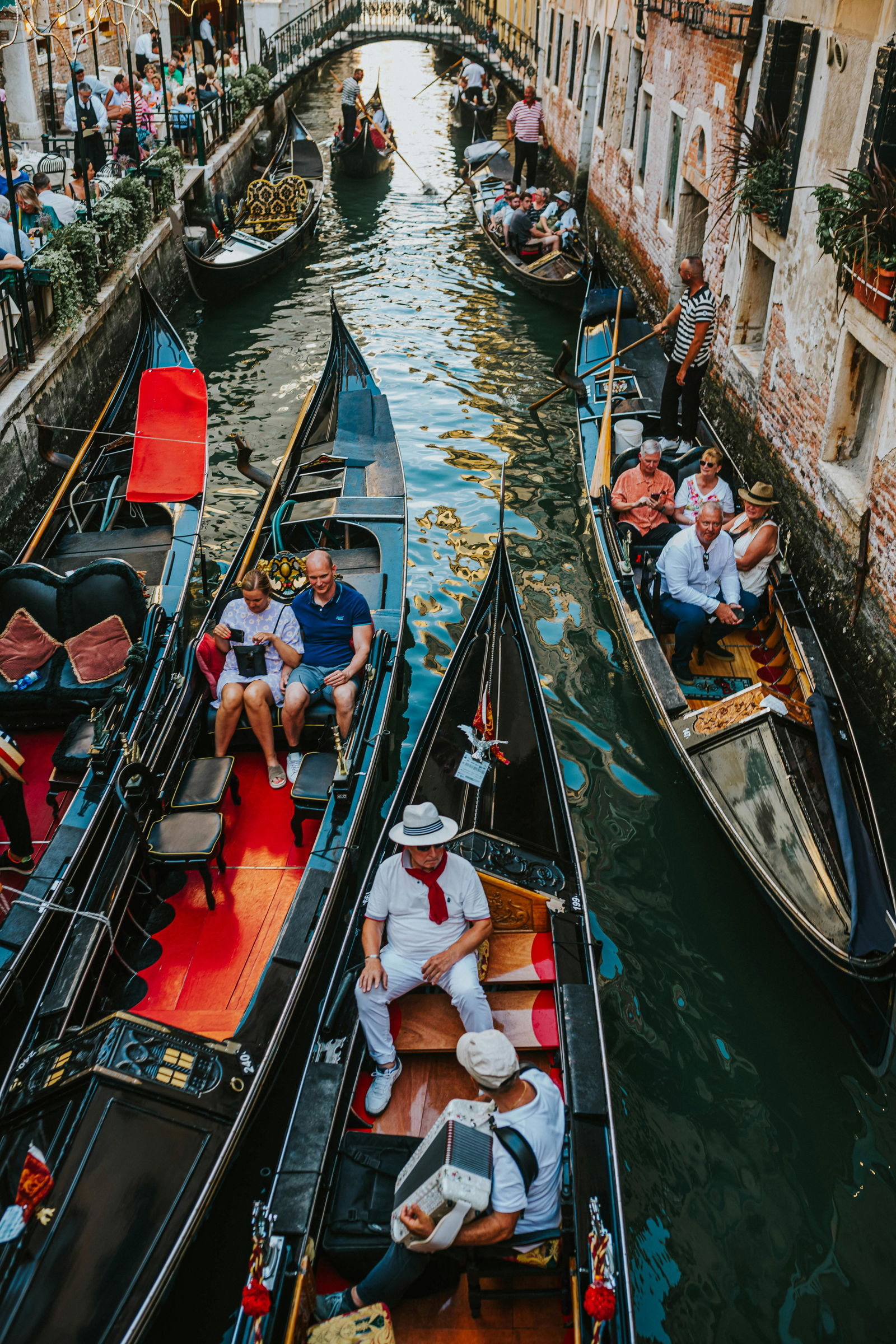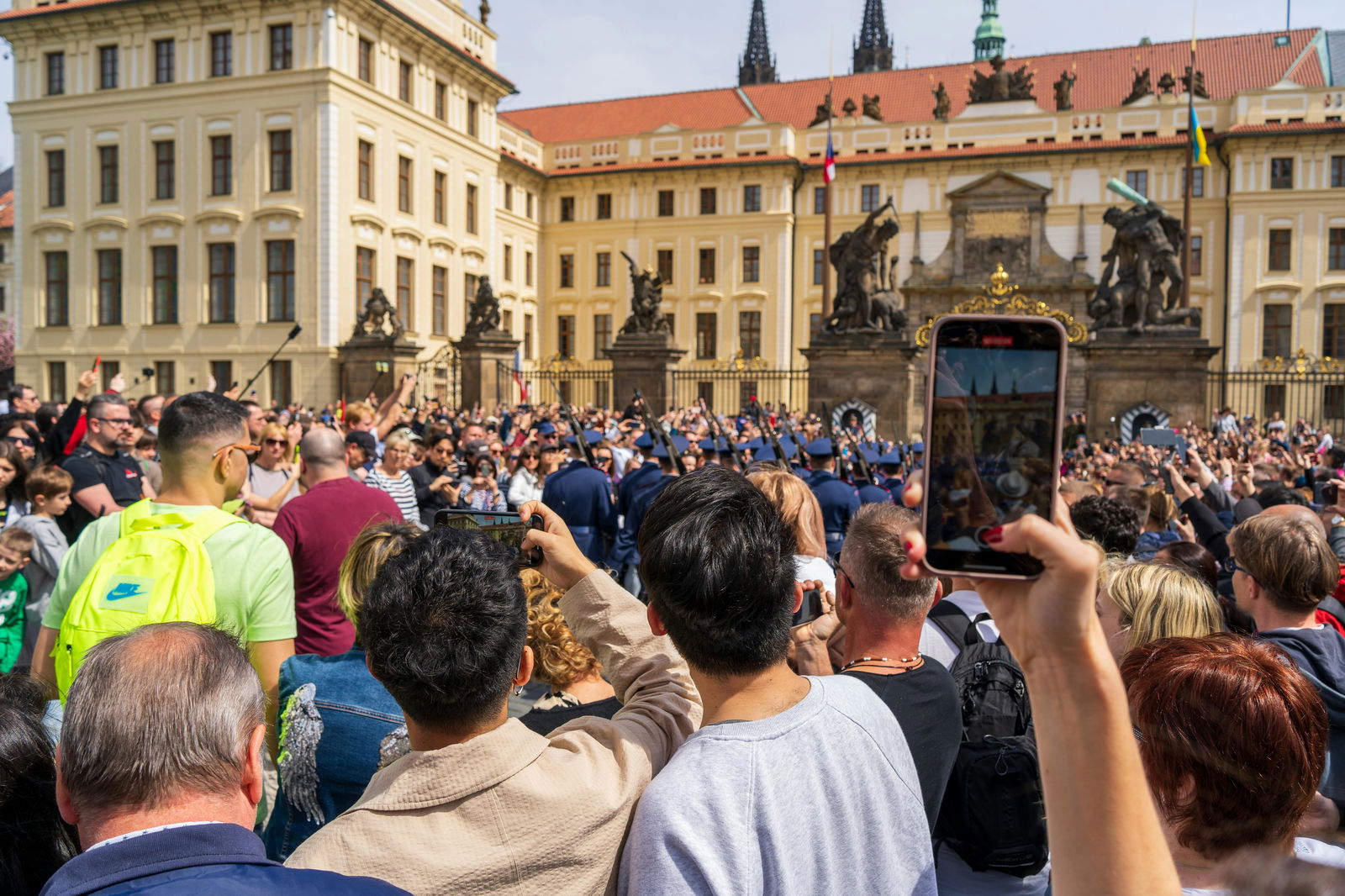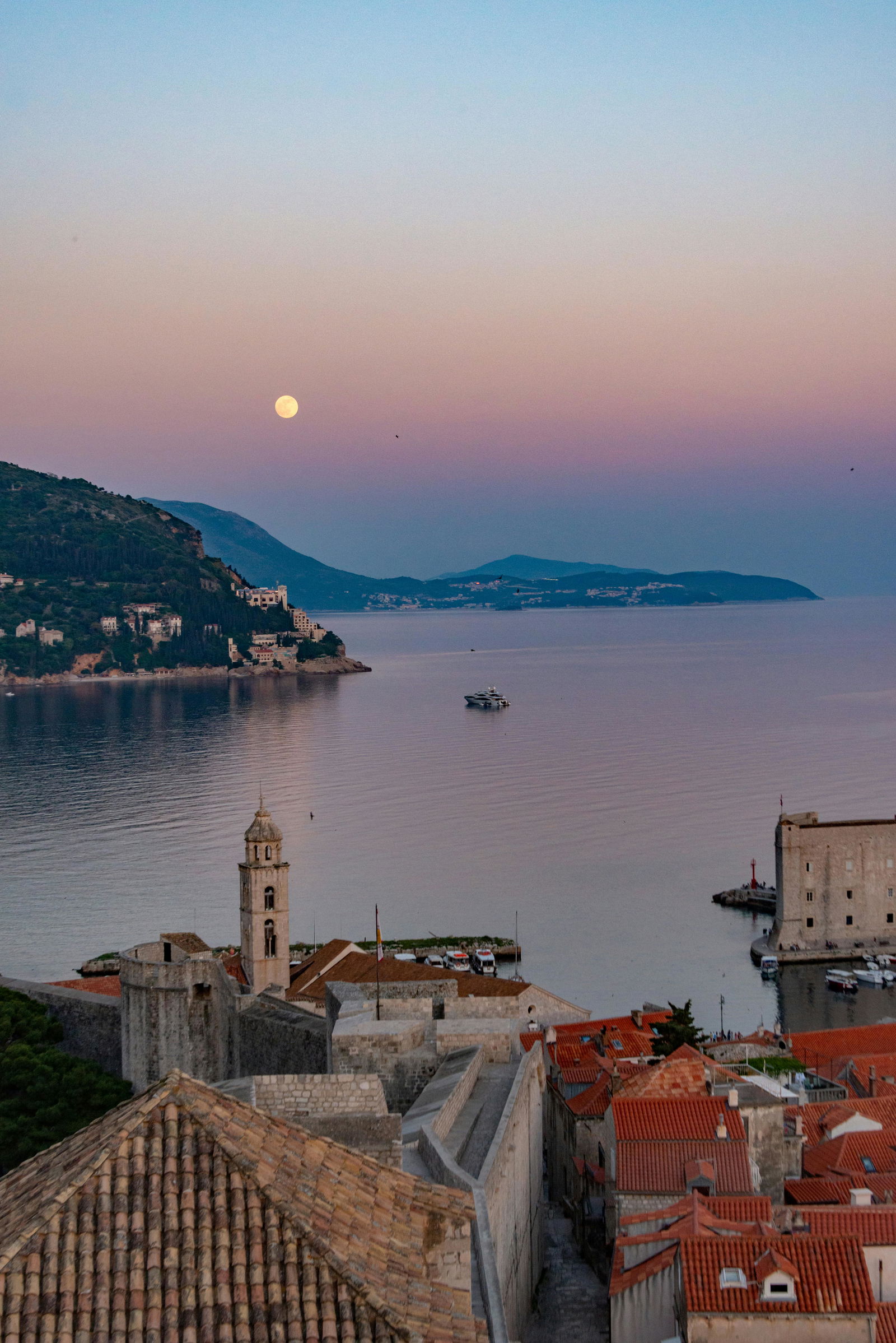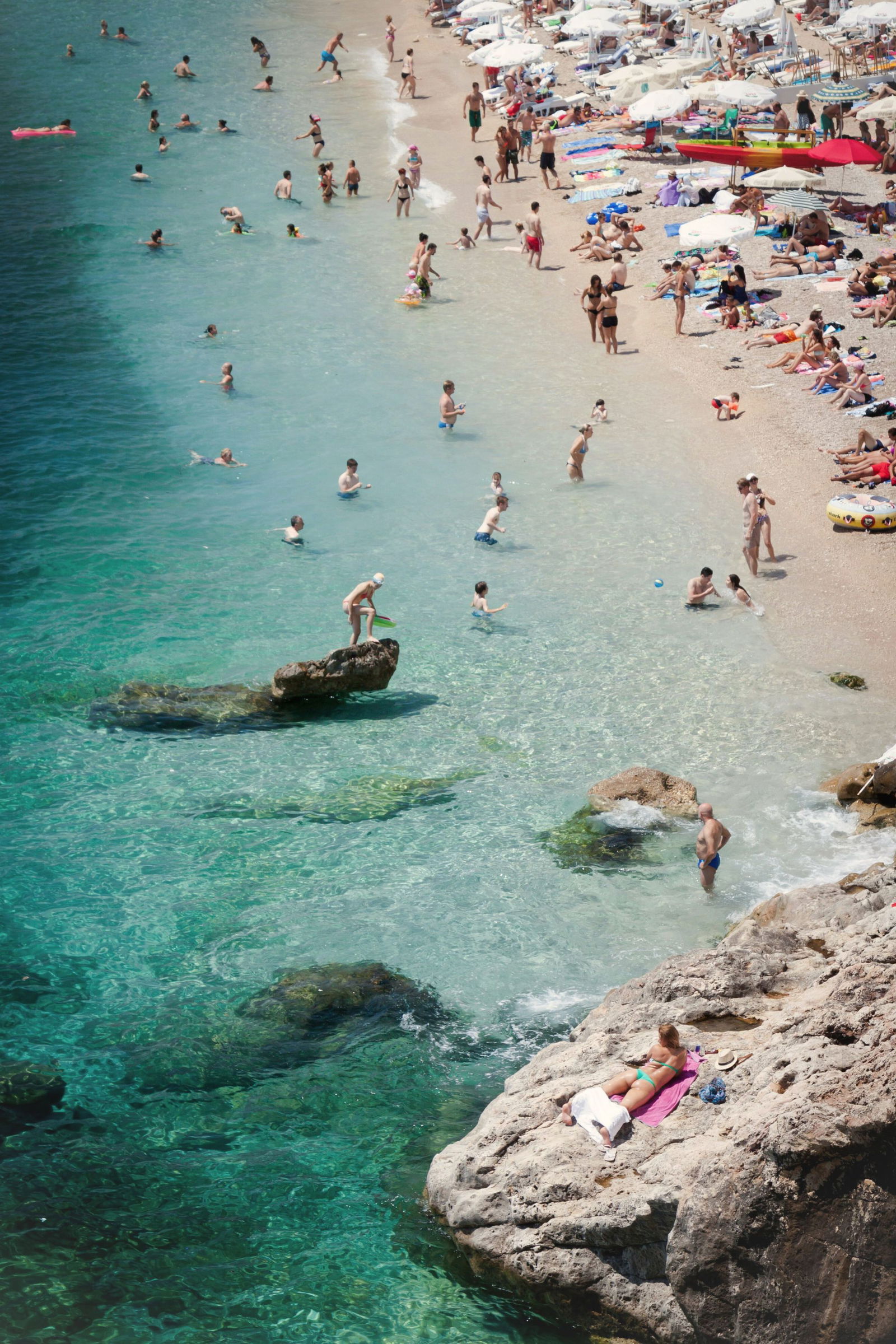

Is Croatia worth visiting?
Two most overrated destinations & where to go instead
Croatia is an incredible place to vacation, with stunning and diverse landscapes, delicious cuisine, and thousands of years of dramatic history. All of these endowments, however, have led to an influx of tourists in recent years, particularly to a few well-known spots. This guide will help you understand what to watch out for, how to have an incredible experience in spite of the crowds, and clue you into some outstanding destinations that are a little bit off the beaten path.
What is overtourism?
First off, let’s take a second to talk about what overtourism is and why you should care.
Europe is the global leader in international tourism, absorbing roughly two-thirds of international vacation travelers each year. Tourism here grew steadily throughout the 2010s, with Europe reporting a peak of 743 million international visitors in 2019 and set to exceed this number in 2024 having recovered from the impact of the COVID-19 pandemic. While many Europeans make their livelihood from tourism, the region has also witnessed increasingly devastating side effects of this “windfall”. Overtourism refers to the negative impacts that occur when there are too many tourists in one place at one time. Some of these include environmental damage, congestion, strain on resources, and cultural loss.
Environmental damage
Large numbers of tourists can literally trample the environment in popular destinations. Their impact can include pollution, littering, and damage to natural habitats and ecosystems that are sacrificed to erect new hotels, amenities, and vacation homes. The city of Barcelona in Spain is a prime example of a destination that has been impacted by overtourism. The city has seen a significant increase in the number of tourists in recent years, with 32 million visitors in 2019 alone, compared to a population of just over 1.6 million. That’s 20 tourists for every one resident, including local children and retirees.
The impact of overtourism on Barcelona's environment has been significant. The city's air quality has deteriorated due to the high volume of traffic, particularly from cruise ships, which emit multiple times more sulphur dioxide and nitrogen dioxide than the city’s cars each year. Both of these gases have severe impacts on human health, and cause acid rain and acidification of the seas.
Likewise, the city's beaches have been severely affected by overtourism. Every year, 65,000 cubic metres of sand needs to be replaced due to erosion caused by tourism. Between Barcelona and Vilanova i la Geltrú, which is 46km south, trash accounts for 38% of a typical fisherman’s catch. The metropolitan area of Barcelona has itself become the second-biggest culprit when it comes to emptying plastic waste into the Mediterranean, according to a 2019 report from the World Wildlife Fund.
Crowding and congestion
Overcrowding in popular destinations can make it difficult for locals to go about their daily lives and for tourists to enjoy their experience. The city of Venice comes to mind, the popular canal city flooded with 30 million visitors annually. This number is staggering considering that Venice has a permanent population of just over 50,000.
The influx of tourists has caused a range of problems, from overcrowding in popular areas to damage to historic buildings and canals. One of the most significant impacts of overtourism in Venice is the congestion in the city's narrow streets and canals. During peak season, the city's famous St. Mark's Square can become so crowded that visitors can barely move. The congestion also extends to the city's waterways, with long lines of tourist boats clogging the canals. No wonder that the city’s population has declined by more than two-thirds, with 1,000 fewer residents every year.

It would seem that Venice has heeded Unesco warnings of “irreversible damage” to its historic centre and, as of 2024, introduced a €5 entry fee for daytrippers between 8.30am and 4pm in spring and summer. The policy is designed to respond to the particular problem facing Venice, which is that around 80% of its tourists come just for the day.
Strain on resources
Tourist hotspots are often a bit remote or historic, which gives them a picturesque look, but also means that local water, energy, and waste management systems were often built years ago for much smaller communities. One example of a waste management crisis due to overtourism in Europe can be seen in the Balearic Islands, which are located in the Mediterranean Sea and are a popular destination for tourists, especially during the summer season. These islands, which include Mallorca, Menorca, Ibiza, and Formentera, have a combined population of just over one million but receive around 14 million tourists per year. This influx of visitors has created a significant waste management crisis, as the islands' infrastructure struggles to cope with the amount of waste generated.
According to data from the Balearic Islands’ government, during the summer season, the islands generate around 4,500 tonnes of waste per day, which is a 70% increase compared to the off-season. This waste includes not only household waste but also litter from beaches, restaurants, and other tourist attractions. The waste management facilities on the islands are not equipped to handle this level of waste, which has resulted in overflowing bins and streets littered with trash. Ultimately, that waste can end up in the sea, polluting the marine environment and threatening the islands' delicate ecosystems, not to mention making for yucky swimming. In 2019, the government of the Balearic Islands adopted groundbreaking new laws pinpointing specific tourism-related waste, such as prohibition and reduction of items found on beaches and single-use plastics.
Cultural loss
Pushed out by tourism development, cultural traditions may be watered down or commercialised for the market. One example of cultural loss due to overtourism is Prague. Prague is a popular destination for tourists due to its beautiful buildings and rich history. However, the influx of visitors has put a strain on the city's infrastructure and architecture.
According to data from the Prague Institute of Planning and Development, the number of tourists visiting Prague increased from 4.1 million in 2000 to 8 million in 2019. This near-doubling has put a significant strain on the city's historic buildings, as the foot traffic and pollution from increased transportation has accelerated the decay of the city's facades and other architectural features.
Furthermore, the rise of short-term rentals and souvenir shops catering to tourists has caused a decline in the number of traditional Czech businesses, such as artisan shops and local restaurants. This has led to a homogenisation of the city's cultural offerings, with many visitors seeking out the same tourist-oriented experiences rather than exploring the city's authentic local culture. In addition, the high volume of tourists has also led to increased prices for housing and other necessities for locals, leading to a pushout of long-time residents from the city centre.

Croatia’s two most overtouristed destinations
Croatia relies more on tourism than any other EU country, and these issues are familiar to residents of the country’s hotspots. Here are Croatia’s two biggest tourist attractions.
Dubrovnik
Dubrovnik is a UNESCO World Heritage site and survivor of a brutal Serb siege in the 1990s, known for its mediaeval architecture and beautiful coastline. More recently, the city gained fame as the main filming location for King's Landing, the capital of the Seven Kingdoms in the enormously popular TV show Game of Thrones. Visitors can take a walk along the city walls, explore the Old Town, and take a cable car up to the top of Mount Srd for panoramic views of the city – all while imagining a fleet of dragons overhead. In recent years, the city’s special beauty has drawn a significant influx of tourists, leading to overcrowding, environmental damage, and cultural loss.
According to data from the Dubrovnik Tourist Board, in 2019, the city received over 1.2 million visitors, with an average of 10,000 visitors per day during peak season. This number is staggering considering that Dubrovnik has a permanent population of just over 40,000. Stradun, the main thoroughfare of the Old Town, becomes so thick with humanity that the street is divided in half, between those filing in one direction and those in the other - with hardly any room to cross or turn around. It is a far cry from the old days of Dubrovnik, when children used to play games on the ancient flagstones in the summer. The influx of tourists has caused a range of problems, including pushing out local and artisan businesses. There is no decent butcher shop in Old Town, for example, despite the decidedly carnivorous diet of most Croatians. No bakeries where goods aren’t reheated from frozen. Only a few small groceries closer in size to a bodega.

That is not to say that Dubrovnik is bound to disappoint or that visiting the city means being complicit in its decline. Here are three tips for having an extraordinary – and ethical – visit:
Stick around
If cruise ships epitomise highly “extractive”, disrespectful tourism, slow travel almost always offers the more sustainable choice. You burn less carbon getting around, are more likely to cook at home, and can give your host a break from daily deep cleans and full laundry service.
If your work and personal life allow you the flexibility, take advantage of Dubrovnik’s offerings for digital nomads. The City of Dubrovnik and Dubrovnik Tourism Board have been hard at work to develop the region as a destination for longer term visitors who work remotely. It is easy to obtain a “Digital Nomad Visa” for any location in Croatia. Actually, the “visa” is a year-long residence permit, but you don’t have to stay for the full duration. This residency makes it easy to enjoy the perks of life in Croatia without worrying about complicating your tax filings.
Along with the Digital Nomad Visa, the City has opened up the Lazareti, an ancient port facility repurposed as a gorgeous coworking office. Overlooking the sparkling blue sea, less than a minute to a sun-soaked picnic on the rocks, the Lazareti boasts high ceilings, inspiring architectural details, and blazing fast wifi. We promise you, it’s an improvement on your current Zoom background.
Even if you’re planning a more traditional visit to Dubrovnik, you can adopt the slow travel philosophy. For example, consider ditching the “whirlwind sightseeing tour” in favour of a home base that is well-positioned for day trips. The area around Dubrovnik is packed with unforgettable excursions, including Pelješac, Lokrum, Cavtat, Kotor, Mljet, and the hinterland. Don’t be in a rush to leave!
Stay outside of the historic core
While the historic core may seem more convenient, keep in mind that all of its accommodations are tucked away down cobblestone alleys in a car-free zone with extremely scant parking for quite some distance. In addition, what most people don’t know is that Old Town Dubrovnik is shaped like a boat, with steep ascents on both sides of the main thoroughfare, so you will probably be hauling your luggage up steep cobblestone alleys to a house with equally steep, narrow old stairs, built some centuries ago. Navigating all of this after a long flight in a crowded city, either in the raucous evening hours or the burning hot day – well, you see where we’re going.
You have alternatives. We recommend Lapad, about 3 kilometres from Old Town. It’s a good walk for the intrepid and well-served by bus and taxi. Lapad offers a quieter, more relaxed atmosphere with a range of accommodation options, from budget-friendly apartments to luxury hotels. One of the main attractions in Lapad is its long, sandy beach, which is popular with both locals and tourists. There are also several smaller beaches in the area, as well as a number of water sports and activities, such as kayaking, paddleboarding, and snorkelling.
Other popular attractions in Lapad include the pedestrian promenade that runs along the waterfront, the Lapad Bay Park, which offers stunning views of the surrounding hills and islands, and the Gruž Harbour, which is a hub for ferries and boats that connect Dubrovnik with other destinations along the Adriatic coast.

Gruž Harbour
Visit off-peak
Don’t be on time! Come late or early in the season. Coastal Croatia is consistently rainy in November and December, but it has many beautiful days in the winter, spring, and fall. For hikers and bikers, this is the season when Dalmatia really comes to life, since the summer heat can rob the most determined outdoor adventurer of his or her enthusiasm. It’s also a great time for boating, since most of the regattas and sailboat festivals take place in the fall.
Accommodations are far cheaper, and while some restaurants and other attractions are closed in the off-season, many remain open or will serve guests upon request. In general, locals are far more relaxed and open to friendship. Most Croatians of working age are hustling from dawn to dusk in the summer months, so the off-season is their time to reconnect with family and friends. Join them in one of the beautiful festivals that take place after the tourists go home such as:
— Wine Festival Dubrovnik: Held annually in April, this festival celebrates the region's winemaking traditions and features tastings, lectures, and workshops on wine production and tasting.
— Good Food Festival Dubrovnik: This festival celebrates the city's culinary traditions and showcases the best of local cuisine. The festival features cooking demonstrations, tastings, and workshops, and takes place in October.
— Dubrovnik Winter Festival: This festival takes place during the winter months, from late November to early January, and features a range of activities, including concerts, exhibitions, and cultural events, as well as a Christmas market and ice skating rink.
Some of the best moments in Dubrovnik happen in the off-season. See what it’s all about!
Plitvice Lakes National Park, located in central Croatia, is also a UNESCO World Heritage site and again, one of the country's most popular tourist destinations. It is the oldest and largest national park in the country, covering an area of around 300km2 and boasting a unique ecosystem. While the park's stunning waterfalls, lakes, and forests have long been a draw for visitors, in recent years, the park has faced significant challenges related to overtourism.
During the peak summer season, the park can be extremely crowded, with long lines, congested walking paths, and overcrowded viewpoints. The sheer number of visitors can also have negative impacts on the environment, including increased pollution, erosion, and damage to sensitive ecosystems. Many try, despite warnings, to swim in the turquoise waters of the lakes, feed the fish, or leave food for other animals.

However, the biggest threats to the park’s survival come from its surroundings, rather than from within the protected area. In 2014, the local government rolled back laws preventing development in regions neighbouring the park. The number of private apartments subsequently rose from 16 in 2009 to over 300 in 2017, with a jump in overnight stays from 600 to over 30,000 in the same period.
The new construction is not connected to any sewage system. Instead, the houses get the water they need directly from the lake basin and empty their waste water into the surrounding land. This has resulted in the creation of what locals sarcastically refer to as Plitvice’s “17th lake”, a foul-smelling pool serviced by an unidentified drainpipe.
The municipality has little in the way of resources to cope with the problem. It is the poorest and least populated county in Croatia, and the lion’s share of the income generated by ticket sales from the park goes directly to the state. Only 6% remains with the local municipality.
In recent years, UNESCO has prompted action by threatening to withdraw the site’s inclusion on its list of world heritage sites because of unsustainable tourism and construction practices. In response, park management has limited the number of daily visitors, promoted off-season visitation, and introduced new trails and walking paths to distribute visitors more evenly throughout the park.
The park has also hiked daily ticket prices to 40 EUR per adult. Given the overwhelming demand to visit the park, these higher prices are a fair reflection of the park’s value, and they also enable the area to invest in skilled staff and critical conservation measures.
You can support these efforts by visiting off-peak and doing your research on accommodation and meal choices. But you could also consider hewing a different path and visiting another park in Croatia’s impressive national system.
Krka National Park: Located in southern Croatia, Krka National Park is home to a series of waterfalls and cascades, including the stunning Skradinski Buk waterfall, as well as diverse flora and fauna.
Paklenica National Park: Located in northern Dalmatia, Paklenica National Park features towering cliffs, deep canyons, and diverse plant and animal life, making it a popular destination for hikers and climbers.
Brijuni National Park: Located off the coast of Istria, Brijuni National Park comprises a group of islands that are rich in natural and cultural heritage, including ancient ruins, diverse flora and fauna, and stunning coastal vistas.
Mljet National Park: Located on the island of Mljet, this park features two saltwater lakes and a number of hiking and cycling trails that wind through dense forests and rocky coastline.
Northern Velebit National Park: Located in the northern part of the Velebit mountain range, this park is known for its rugged landscapes, deep canyons, and diverse flora and fauna. The park only receives around 20,000 visitors per year versus more than a million who visit Plitvice.
Risnjak National Park: Located in western Croatia, Risnjak National Park is home to dense forests, alpine meadows, and the highest peak in the region.
Kornati National Park: Located off the coast of Dalmatia, Kornati National Park comprises a group of islands and islets that are known for their rocky landscapes and crystal clear waters.
Telascica Nature Park: Located on the island of Dugi Otok, Telascica Nature Park features a deep bay, towering cliffs, and diverse plant and animal life. The park receives around 100,000 visitors per year.
While these parks may receive fewer visitors than some of the more popular national parks in Croatia, they offer unique and breathtaking natural landscapes that are well worth a visit for those who are looking to get off the beaten path.

Krka National Park

We’re here to craft your dream Mediterranean villa escape.
Feeling inspired? Talk to our on-island team to make your travel dreams a reality.



